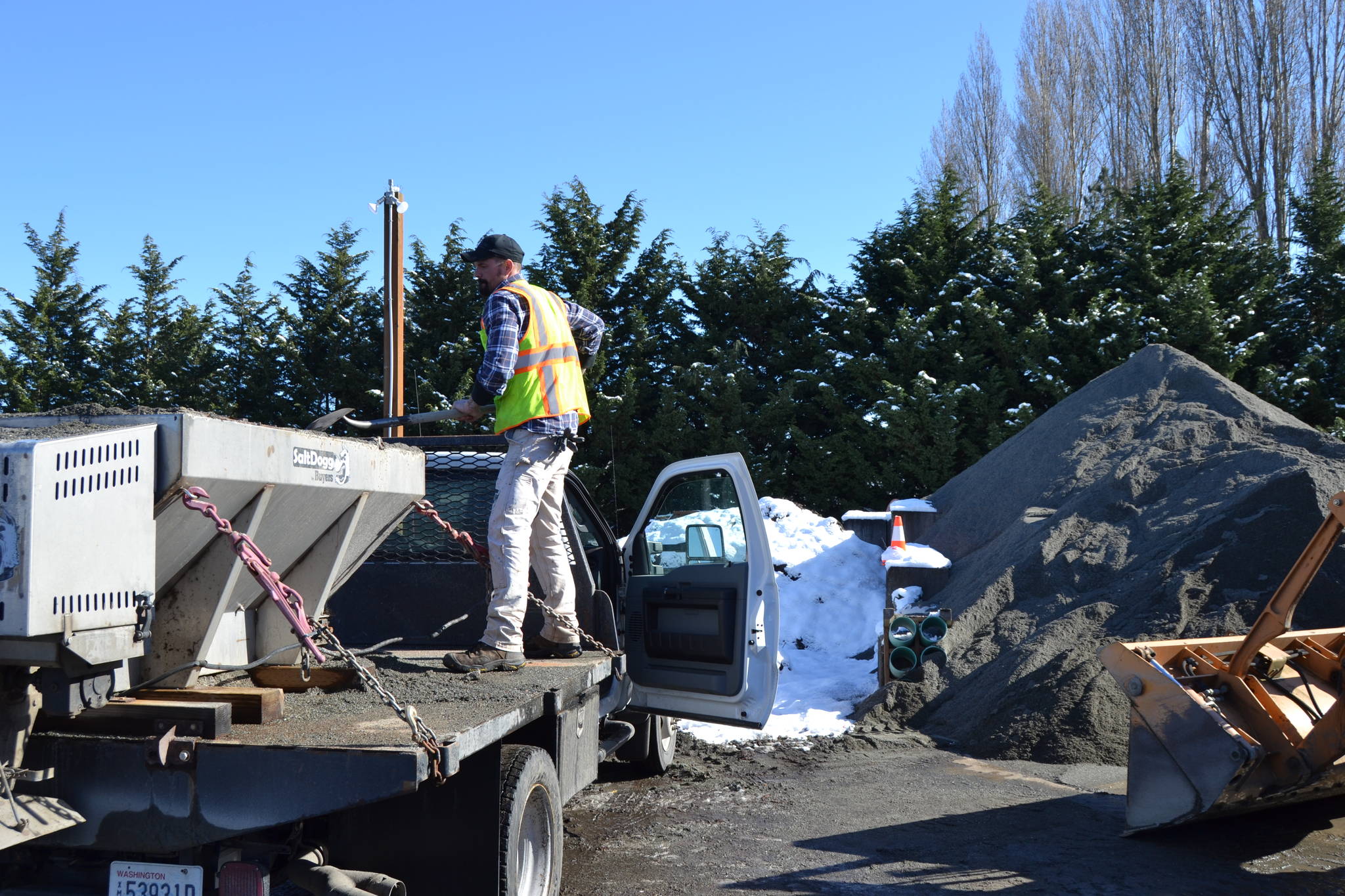While some of us wake up to a dusting of snow on our lawn and ice on our windshields, a select few have been on the roads hours before clearing a safe path for Sequim.
With more snow tentative in certain parts of the area this week, leaders with different municipalities share the process for clearing the roads and determining when and if schools will open.
In the Sequim area, Clallam County crews cover about 200 miles of roads from Blue Mountain Road to Diamond Point.
Usually, crews look to the mountains but with the latest significant snow fall, Rick Nichols, Clallam County road maintenance supervisor for district 1 Sequim, said they were plowing and sanding from the hilltops to the water.
“The primary thing to take care of is the school buses first,” Nichols said.
“If there’s enough snow, they go to snow routes and we don’t go up in the hills so then we take care of all the lower roads first.”
The county’s 12-man crew in Sequim, minus a mechanic, drive various trucks and dump trucks with plows typically starting around 6 a.m. clearing paths and sanding for 10-12 hours.
Two other county crews work similar schedules, Nichols said, in Port Angeles on about 200 miles of road from O’Brien Road to Lake Crescent, and about 100 miles of road in the Forks area.
Crews don’t work at night to prevent injuries and exhaustion, Nichols said.
They use sand and in extreme ice conditions and salt mostly on bus routes, he said, but no liquid de-icer.
County crews don’t plow driveways unless there is a medical emergency, Nichols said.
However, with snow blurring county and City of Sequim limits’ lines, administrators say they aren’t going to lift their plow if one or the other crosses over.
“Mostly, we take care of our roads and for roads like River Road, if the city hasn’t been there yet then we’ll plow it,” Nichols said.
Like Clallam County, the City of Sequim’s five trucks with plows and salt/sand spreaders clear arterials first like Washington Street and Sequim first along with other heavily traveled roads.
David Garlington, Sequim public works director, said responsibility for overpasses falls to the Department of Transportation, city and county crews plow them.
City crews load sanders on truck truck beds at the City Shop off North Second Avenue, and in this most recent snowfall they ran out of sand and had to order more from Davis Sand & Gravel, he said.
In city limits, road crews mix salt and sand and if there’s no snow accumulation they’ll use de-icer, or magnesium chloride for preventative measures.
Garlington said de-icer isn’t effective until the weather is at least 39 degrees.
Last week, Pete Tjemsland, Sequim utilities manager, said road crews started plowing and sanding around 5 p.m. until 1:30 a.m. before starting up again around 5 a.m.
Tjemsland said despite the long hours, road crews kept up with their other special projects along with snow removal too.
Spots to be weary of traveling in snow and ice are where you’d guess — in the hills, i.e. South Third Avenue, Miller Road, Whitefeather Way, Tjemsland said.
Once city crews see a clear weather report with no more snow, Garlington said the city will send out its one sweeper truck to pick up sand and salt.
Too slick or not
With road crews clearing paths best they can for school buses, what determines a late start or no school for Sequim Schools?
Jeff Gossage, Sequim School District, director of transportation, said it comes down to an early morning discussion between him and Sequim superintendent Gary Neal.
During a snow/ice event, Gossage said he’s typically driving high risk roads around 2:30 or 3 a.m. checking conditions.
At about 5 a.m., he’ll contact the superintendent with his recommendations.
“The thing with the peninsula is that you can have snow in one area, and absolutely nothing four-five miles away,” Gossage said. “That’s what makes the decision extremely hard. We’ve got quite a few families depending on our decision.”
City and county administrators along with Gossage all said they look at forecasts a lot to make the best decisions.
Wreck report
Sequim Police Department reports that there were two vehicle collisions from Feb. 17-23 in Sequim city limits and one of those was because of the snow/ice.



